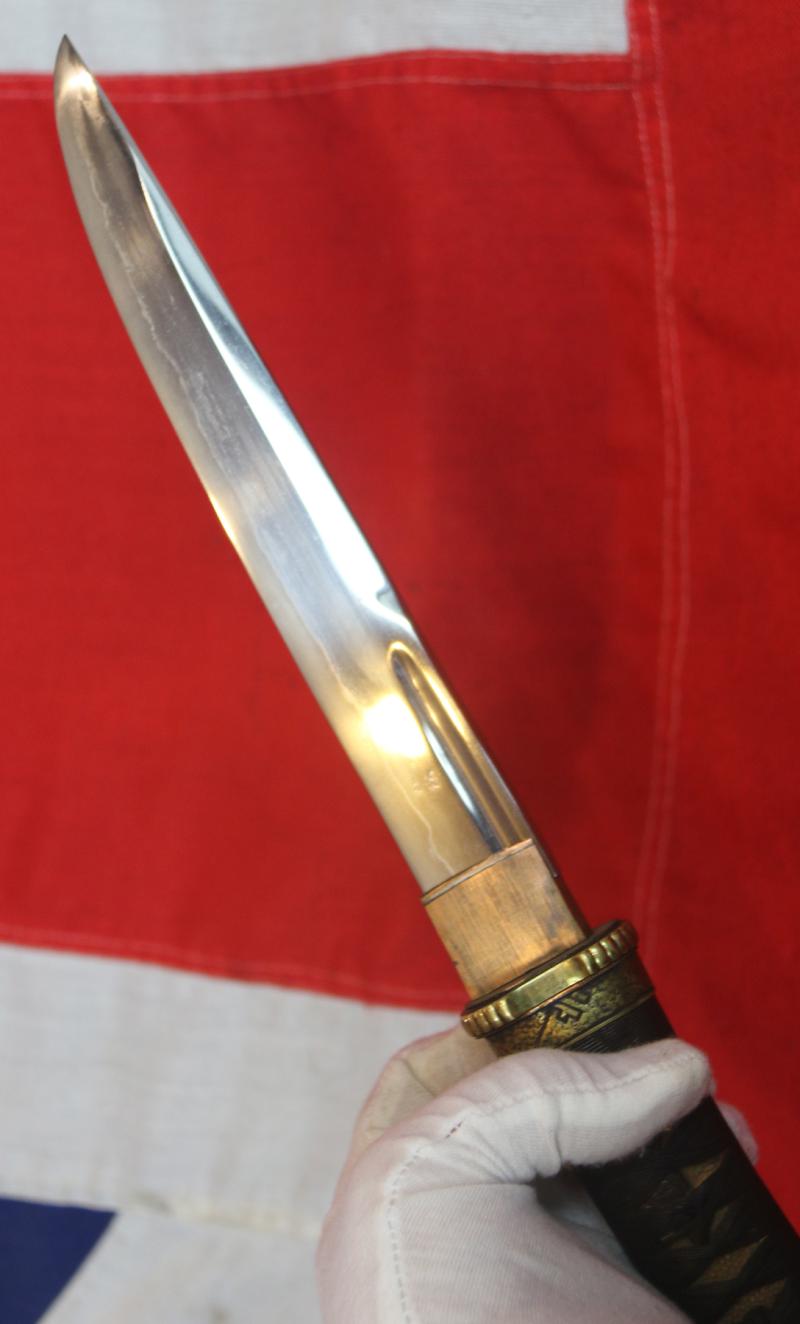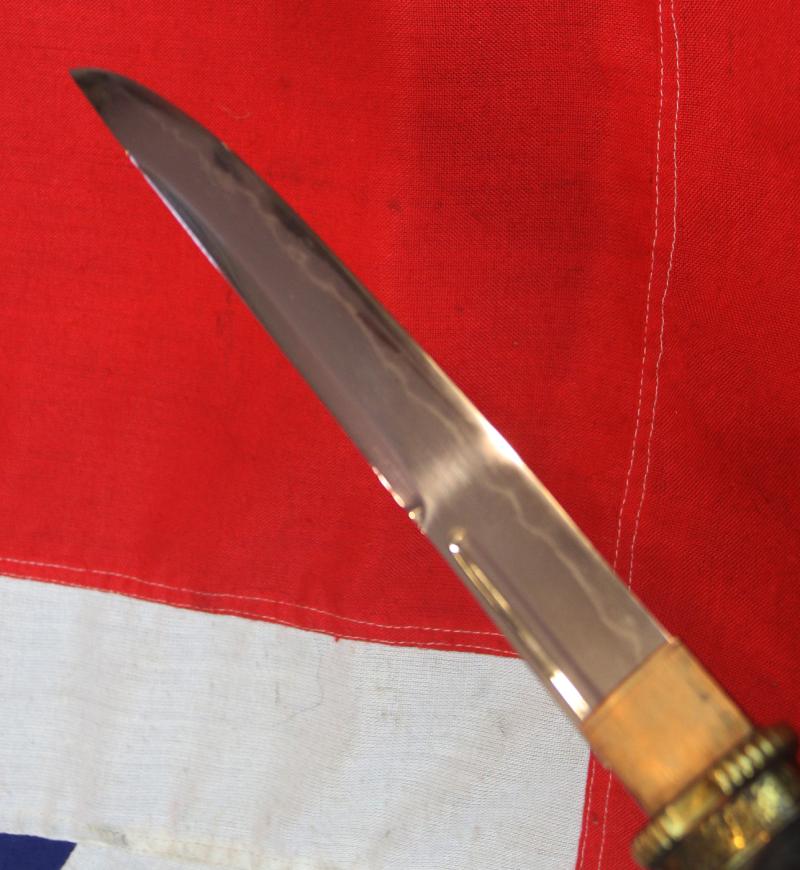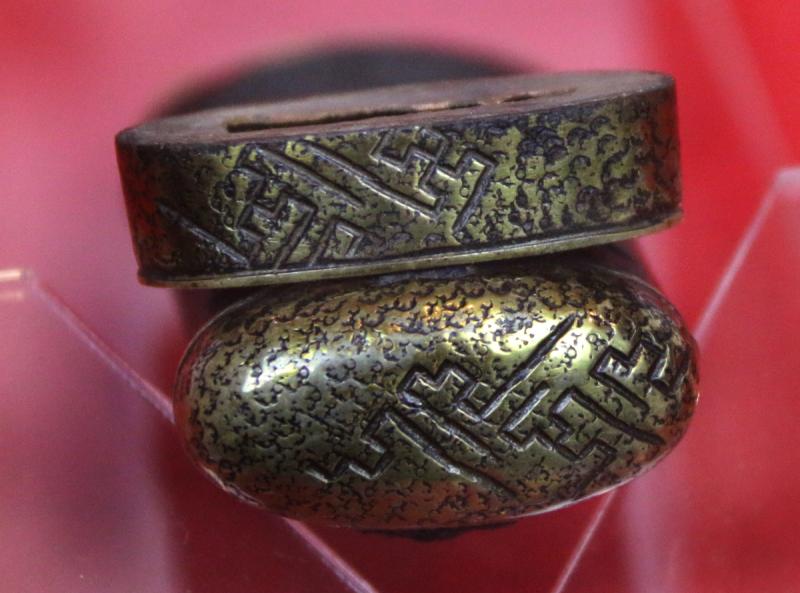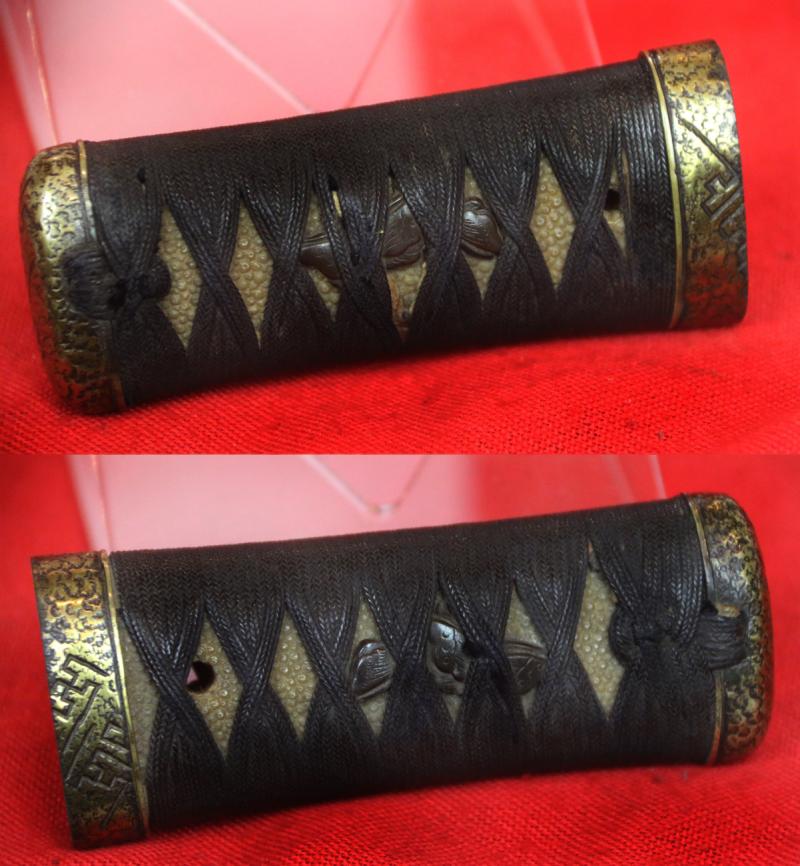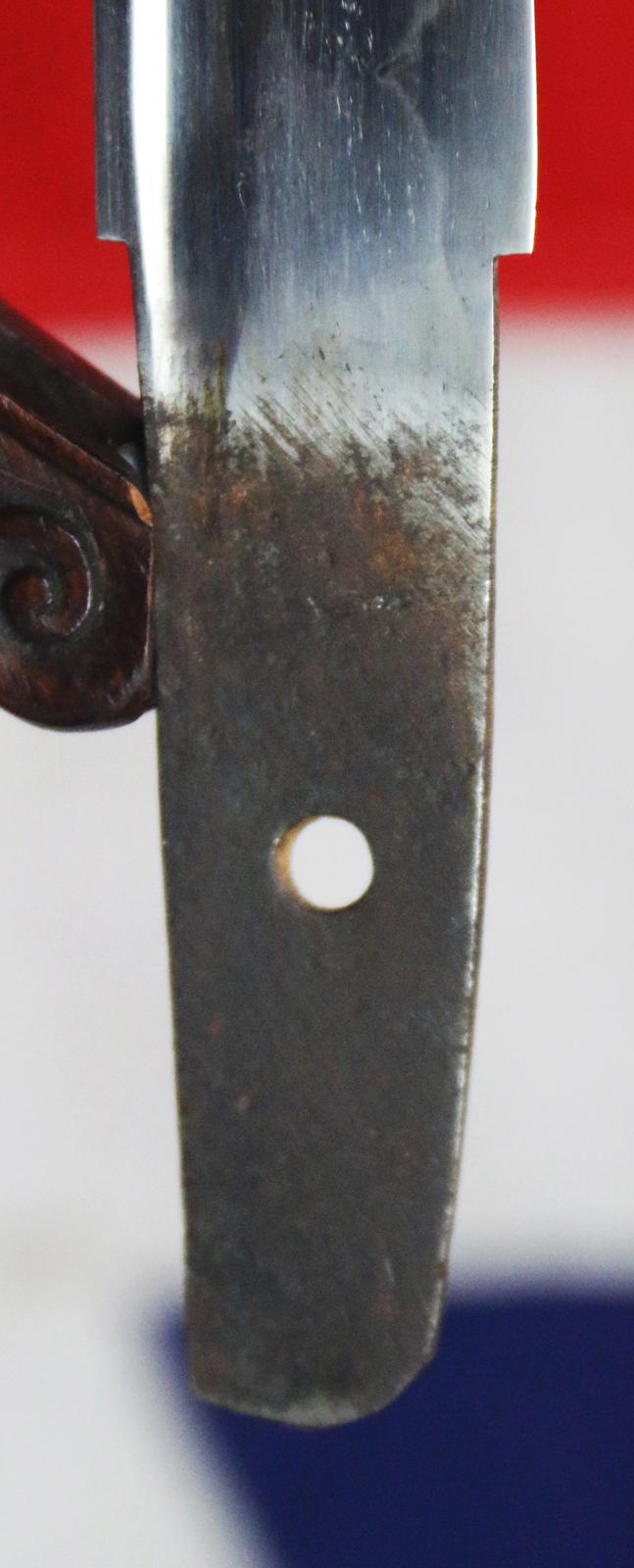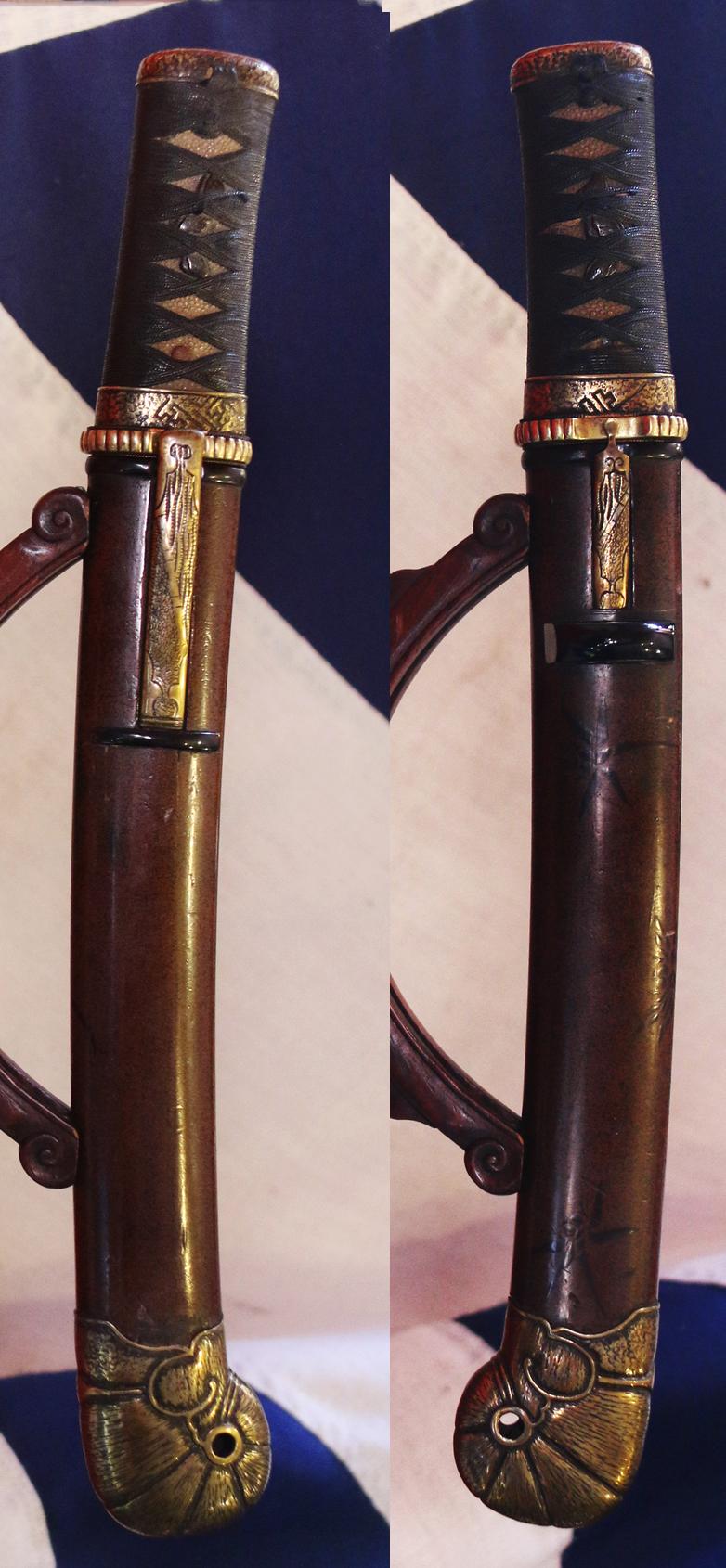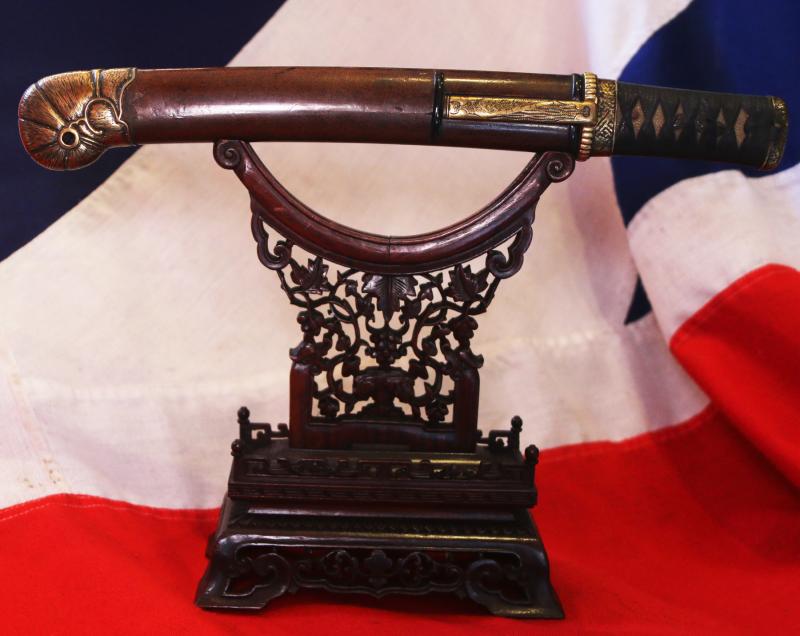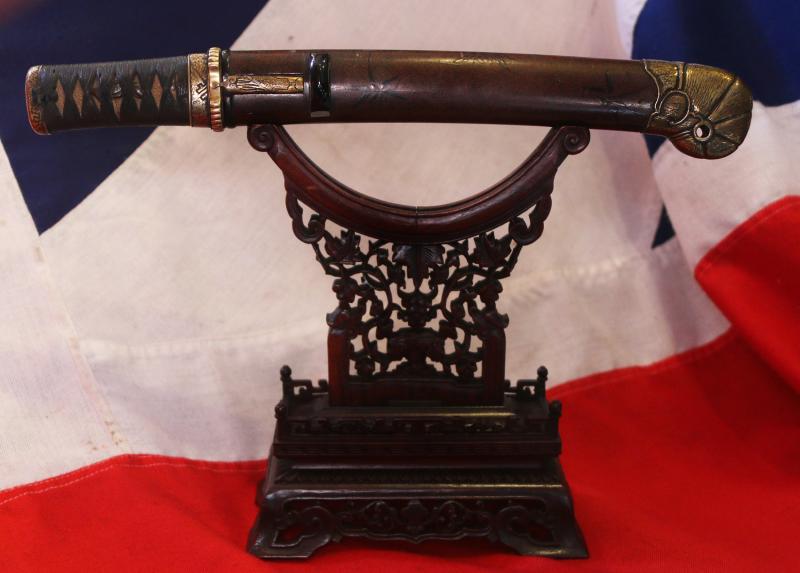A Beautiful Unokubi Zukuri Blade Samurai Armour Piercing Tanto. Ise-ebi or Kamakuraebi Sayajiri 鞘尻, & Matching Matsushiro Sinano School Kozuka and Kogai. 16th To 17th Century Blade, Original Edo Koshirae, Of Nagano Province
A wonderful earliest Shinto bladed armour piercing tanto, with its unique original Edo period “Matsushiro” koshirae made in Matsuro-han in Shinano (Nagano) province, with a Matsuhiro kamakuraebi lobster tail mount on the end of the deep red urushi lacquer saya, that is overdecorated with black speckling and dragonflies.
Sometimes called "the old man of the sea" because of its bent back, the Japanese lobster (ise-ebi or kamakuraebi) is a symbol of longevity. Here it appears on the saya as a sayajiri but it can also appear in many ways, such as the back of a vest worn for theatrical performances. Kyōgen is a comic form of Japanese theatre performed together with the more serious Noh. Boldly patterned overvests (kataginu) were worn for important kyōgen roles, such as Tarōkaja, the comical servant.
Unokubi (鵜首): Is an uncommon tantō blade style akin to the kanmuri-otoshi, with a back that grows abruptly thinner around the middle of the blade; however, the unokubi zukuri regains its thickness just before the point. There is normally a short, wide groove {hi} extending to the midway point on the blade, this is a most unusual form of unokubi zukuri blade tanto with a short wide hi. It has a copper, habaki, with original Edo period lacquered saya large with lobster form Sayajiri 鞘尻 & a fully matching suite of sinchu and contrasting silver line mounts to the kozuka and kogai of the fine Matsushiro Sinano school, including the tsuba and fuchi kashira. Carved buffalo horn fittings and kurikata. the original Edo urushi lacquer is over decorated with speckles and black dragonflies in flight. The tsuka is also bound in rare, original Edo period micro thin tsuka-ito. Over a fine pair of shakudo menuki of butterflies and a bird combined.
Japan was once known as the “Land of the Dragonfly”, as the Emperor Jimmu is said to have once climbed a mountain in Nara, and looking out over the land, claimed that his country was shaped like two Akitsu, the ancient name for the winged insects, mating.
Dragonflies appeared in great numbers in 1274 and again in 1281, when Kublai Khan sent his Mongol forces to conquer Japan. Both times the samurai repelled the attackers, with the aid of huge typhoons, later titled Kamikaze (the Divine Winds), that welled up, destroying the Mongol ships, saving Japan from invasion. For that reason, dragonflies were seen as bringers of divine victory.
Dragonflies never retreat, they will stop, but will always advance, which was seen as an ideal of the samurai. Further, although the modern Japanese word for dragonfly is Tombo, the old (Pre Meiji era) word for dragonfly was Katchimushi. “Katchi” means “To win”, hence dragonflies were seen as auspicious by the samurai.
Japanese lacquer, or urushi, is a transformative and highly prized material that has been refined for well over 7000 years. The use of natural lacquer, known as urushi, has a 9,000-year history in Japan. Lacquered artifacts dating back to the prehistoric Jomon period (10,000–300 BCE) have been found at various archeological sites throughout Japan.
Cherished for its infinite versatility, urushi is a distinctive art form that has spread across all facets of Japanese culture from the tea ceremony to the saya scabbards of samurai swords
Japanese artists created their own style and perfected the art of decorated lacquerware during the 8th century. Japanese lacquer skills reached its peak as early as the twelfth century, at the end of the Heian period (794-1185). This skill was passed on from father to son and from master to apprentice.
The blade has an amazingly vibrant and active hamon.
It has spent two full weeks in our workshop being conserved and cleaned by hand by our artisans for around 65 hours, returning it to near exactly how it looked 150 years ago. Of course there are slight signs of natural wear and aging on the exterior etc., but it was important to leave this as intact as possible to complete a museum grade conservation.
Every item is accompanied with our unique, Certificate of Authenticity. Of course any certificate of authenticity, given by even the best specialist dealers, in any field, all around the world, is simply a piece of paper,…however, ours is backed up with the fact we are the largest dealers of our kind in the world, with over 100 years and four generation’s of professional trading experience behind us
Code: 25483
4550.00 GBP


